New Study Finds That Kangaroos Are Southpaws

William Boyd braces for his pet kangaroo’s left hook in this iconic photo. (Photo: Museum Victoria/Public Domain/WikiCommons)
As if being left-handed weren’t cool enough already, the southpaw league just gained a bunch of new members.
After a broad study of wild marsupials, zoologists from Saint Petersburg and Tasmania have discovered that almost all kangaroos are lefties. Their findings are reported in “Parallel Emergence of True Handedness in the Evolution of Marsupials and Placentals,” published today in Current Biology.
Until this study, humans, with our about-90-percent-righty stats, were thought to be the only mammals to show “true” handedness—a marked species-wide preference for one hand over the other. But when put through a statistical handedness test, “kangaroos pulled down the highest grades,”says study supervisor Dr. Yegor Malaschichev. Around 86 percent of red kangaroos and 79 percent of Eastern grey kangaroos use their left hands preferentially to feed.
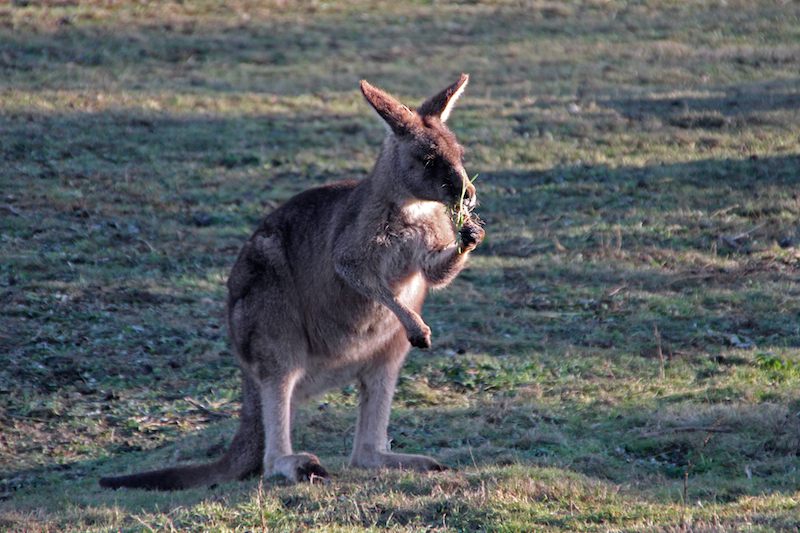
An eastern grey kangaroo shows off his left-handedness. (Photo: Andrey Giljov & Karina Karenina)
To figure this out, principal investigator Andrey Giljov and researcher Karina Karenina spent years watching kangaroos, wallabies, sugar gliders, and other marsupials, first staking out zoos in Russia, Germany and Spain, and then, with support from the National Geographic Society Committee for Research and Exploration, traveling to wild habitats in Tasmania and central Australia (where, Karenina says, the Australian researchers were “very interested and excited about the Russians [who had] come to study handedness in kangaroos”).
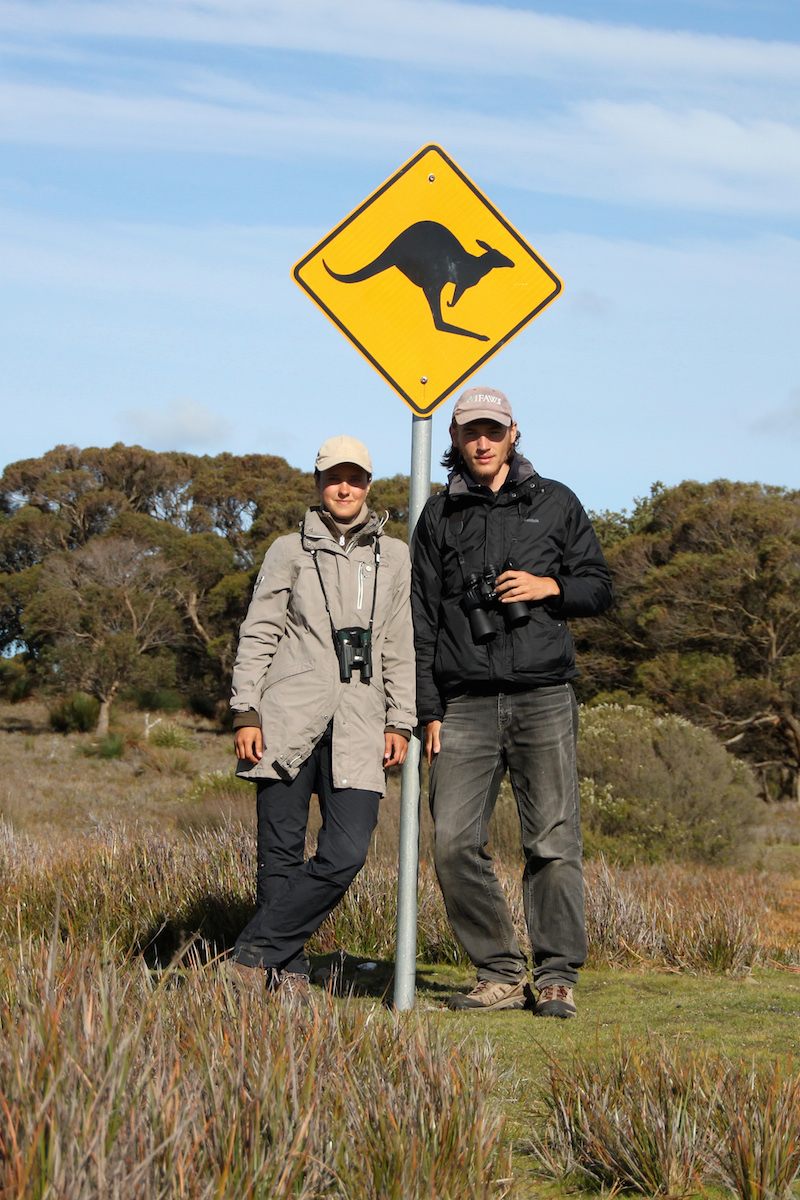
Researchers Andrey Giljov and Karina Karenina, watching out for their study subjects. (Photo: Andrey Giljov & Karina Karenina)
As the animals went about their days, Giljoy and Karenina kept careful track of which hand each species used to perform common tasks—such as picking and eating grass, bending branches, and nose-scratching. (Other types of scratching weren’t considered, says Karenina, because of all the common itchy spots, only “the nose is equally distant from both forelimbs.”)

A Goodfellow’s tree kangaroo at Sydney’s Taronga Zoo. Most individual tree kangaroos have forelimb preferences, but the species as a whole does not. (Photo: Andrey Giljov & Karina Karenina)
They didn’t expect to find too much. Compared to human brains, in which the right and left hemispheres work relatively independently, marsupial brains are more of a piece. But when they crunched their numbers, Giljov and Karenina came up with undeniable results.
Eastern grey and red kangaroos are almost all lefties, as are brush-tailed betongs, which live in grasslands and look like mice pretending to be kangaroos. Red-necked wallabies are sometimes lefties and sometimes not. Tree kangaroos make the choice on an individual level, and end up about evenly split. Sugar gliders and grey short-tailed opossums are ambidextrous.

This chart explains each marsupial species’s level of handedness, and how it is related to other species. (Figure: Giljoy et. al/Current Biology 2015)
So how come? The answer likely has more to do with feet than hands. Marsupials “have a number of adaptations for locomotion,” says Giljov—some, like sugar gliders, travel on all four forelimbs, while others, like kangaroos, walk upright. Studying such closely related species with such different ways of walking allowed the researchers to draw conclusions about where handedness comes from.
 Red-necked wallabies demonstrating a variety of stances — bipedal, quadrupedal, and tripedal. (Figure: Giljoy et. al/Current Biology 2015)
Red-necked wallabies demonstrating a variety of stances — bipedal, quadrupedal, and tripedal. (Figure: Giljoy et. al/Current Biology 2015)
They found the quadrupedal species they observed didn’t show overall handedness—although some individuals might have a favored forelimb, each group overall was “fifty-fifty,” Giljov says. The bipedal species, though, clearly preferred their left hands. The thought is that, because upright walking doesn’t require all four legs to move synchronously, “there’s more space for development of something asymmetrical,” says Karenina. Red-necked wallabies, who switch between different gaits, are the smoking gun—they tend to favor their left hands when walking on two legs, but show no preference when walking on four.
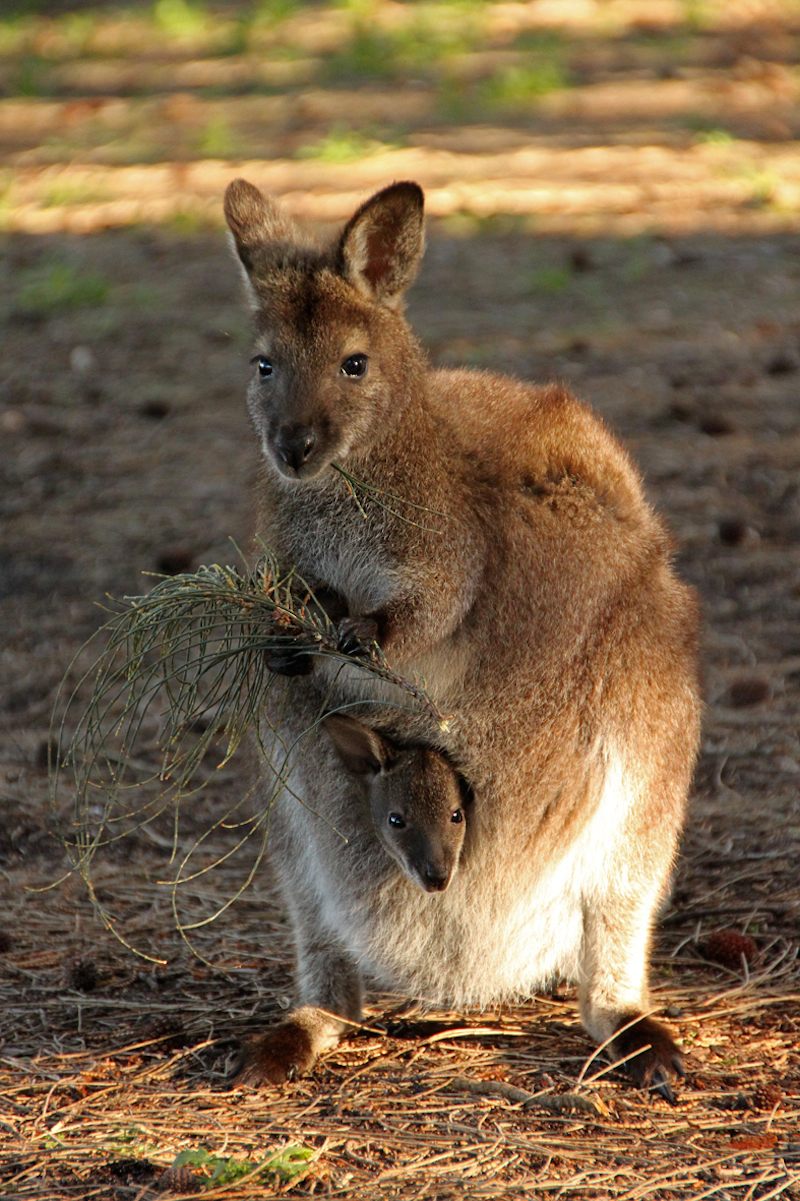
Wild red-necked wallabies prefer to use the left forelimb for feeding, but only when they’re on two legs. (Photo: Andrey Giljov/National Geographic Society.)
Primates are split like this, too, with biped chimpanzees and humans just a few evolutionary limbs away from macaques, colobuses, and other more down-to-earth cousins. But while there have been many studies of primate handedness, no one had bothered to poll marsupials. “This whole taxon was neglected in the research,” Giljov says. He hopes this research can shed light on handedness in primates, too, especially as it’s still unclear how handed species came to choose one side or the other.
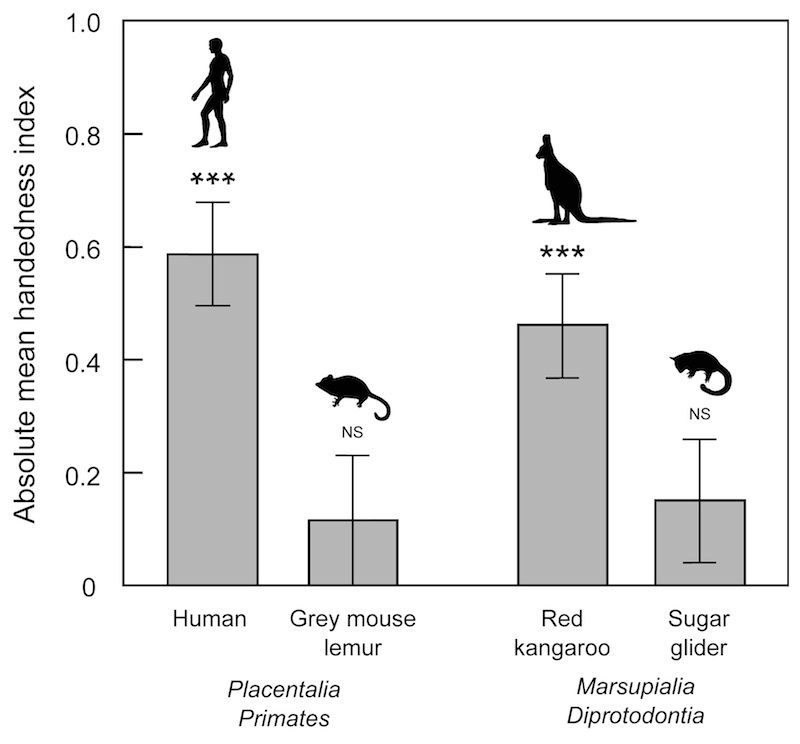
How primate handedness levels compare to marsupial handedness levels. (Figure: Giljoy et. al/Current Biology 2015)
These findings add to the kingdom-wide show of handedness researchers have been piecing together over the years. All Sulphur-crested cockatoos, for example, use their left feet to pick up food, while young horses prefer to sniff with their right nostrils. No creature is too small for such scrutiny—researchers at Texas A&M found that when two roads diverge in a Y-shaped tube, cockroaches tend to turn right, suggesting “right-side dominat[ion] in their tactile and odor senses.”
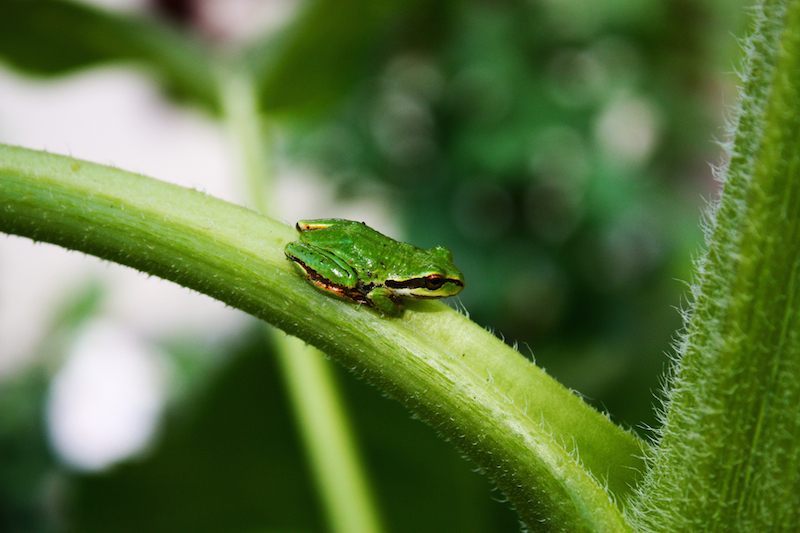
Pacific tree frogs have also shown signs of handedness. (Photo: Kjfmartin/WikiCommons CC BY-SA 3.0)
Malaschichev got into the topic by chance, when a college professor asked him to pay attention to shoulder asymmetry in fire-bellied toads in order to see how it related to toad hand preference. He was hooked, and went on to do his doctoral research with that same professor (who, Malaschichev says, “[was sometimes] not satisfied that I spent more time with frogs, studying their asymmetry, than paying attention to my other PhD topic,” which was reptile skeletons). Now that he has his own lab, he is able to “realize some ideas which started nearly 20 years ago, when I was a student myself.”
He, Giljov, and Karenina are all rightys, so when you’re done high-fiving the kangaroos, remember to switch it up.















Follow us on Twitter to get the latest on the world's hidden wonders.
Like us on Facebook to get the latest on the world's hidden wonders.
Follow us on Twitter Like us on Facebook